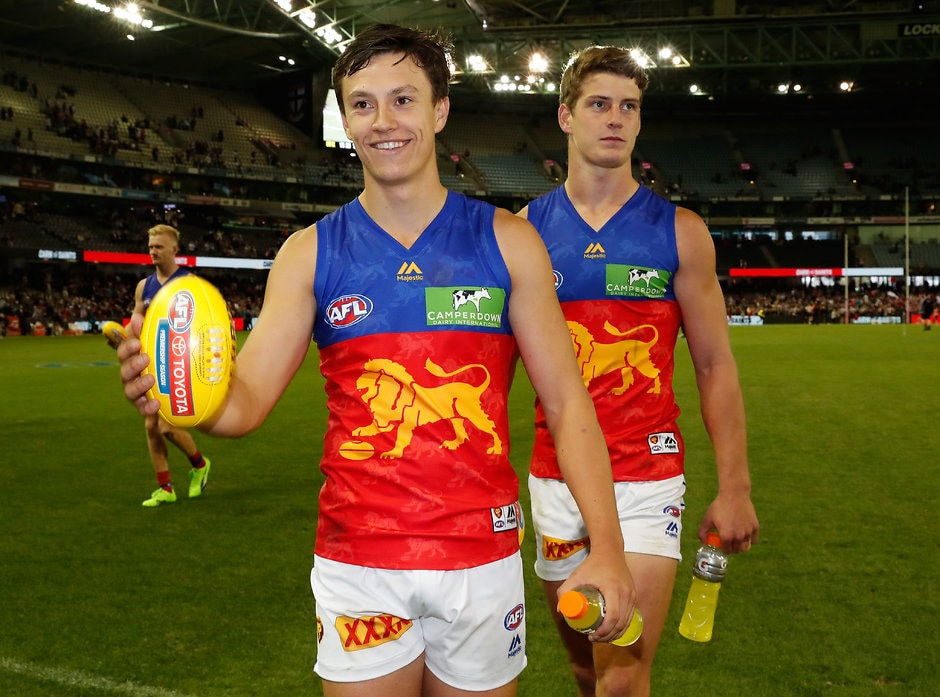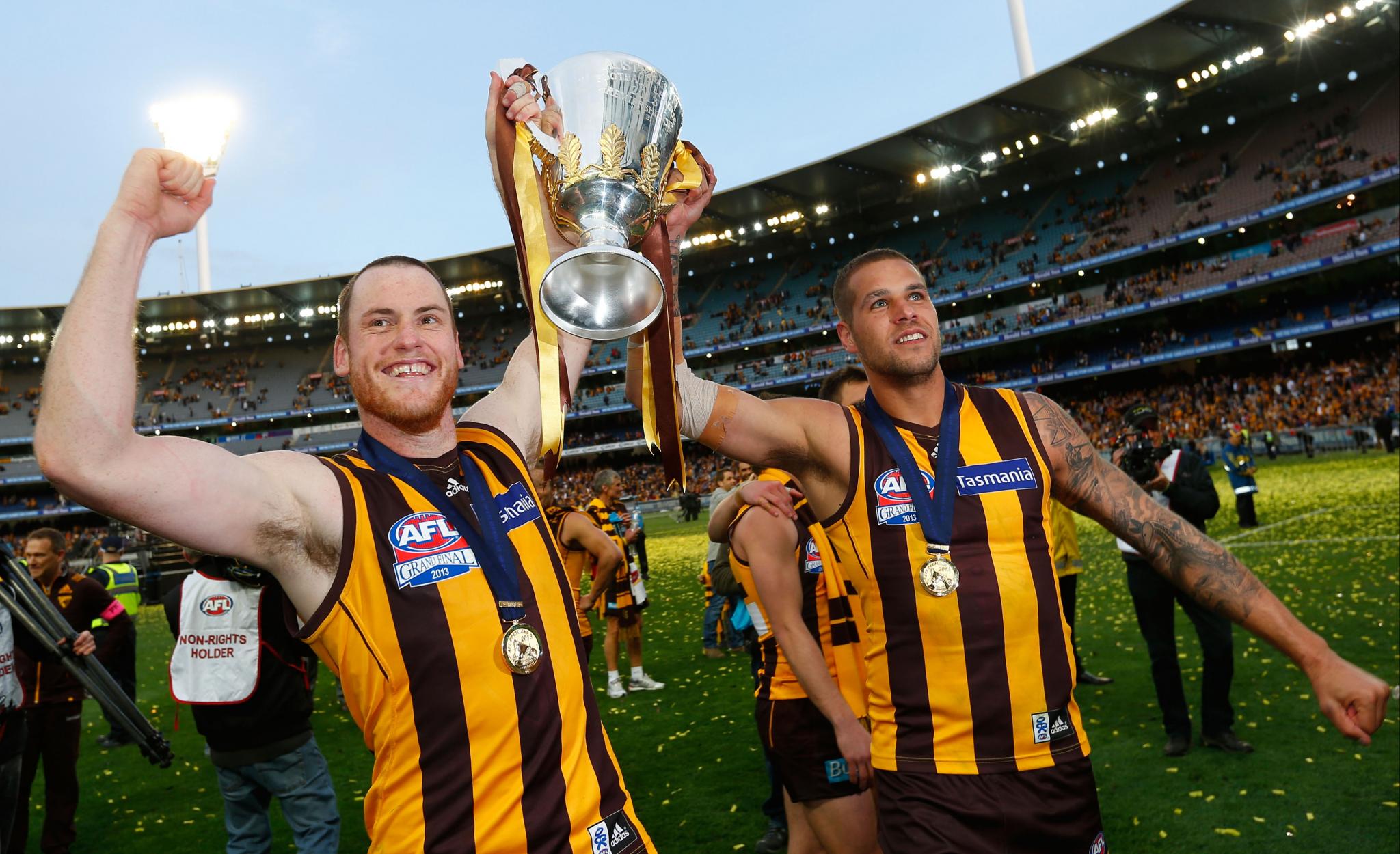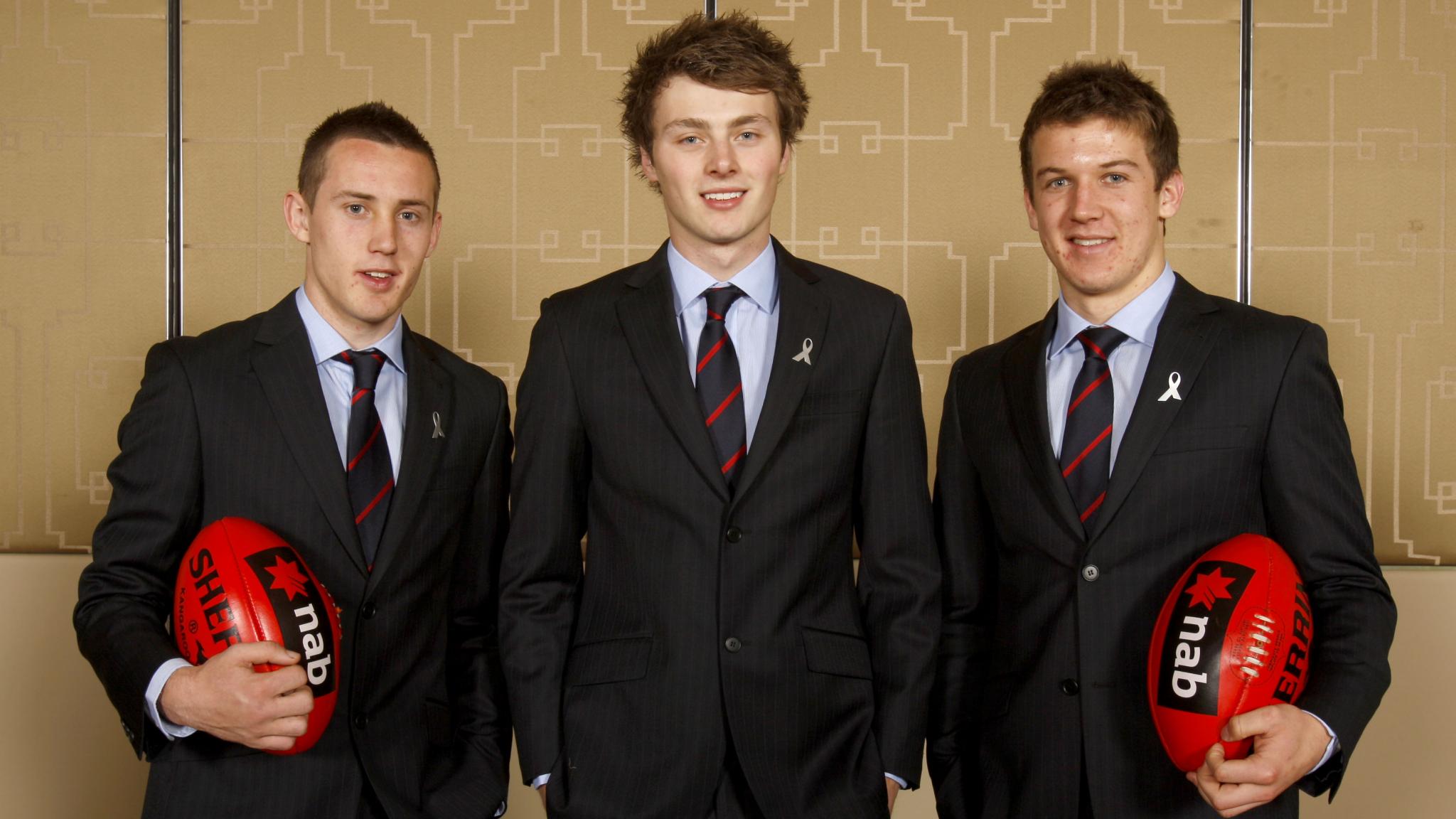THERE are several loaded draft hands this year.
As it stands, before trades or Academy bids potentially change the order, Gold Coast will have four selections inside the top 20 for the third time, behind its inaugural 2010 draft and 2016.
>> The 2019 NAB AFL Draft runs from November 27-28. Follow all the latest news in the draft hub
Melbourne is set to have multiple top-10 picks – Nos. 3 and 8 – for an AFL-leading fifth occasion since 2003, snapping a deadlock with Greater Western Sydney.
Christian Petracca and Angus Brayshaw after Melbourne picked them at No.2 and No.3 in 2014. 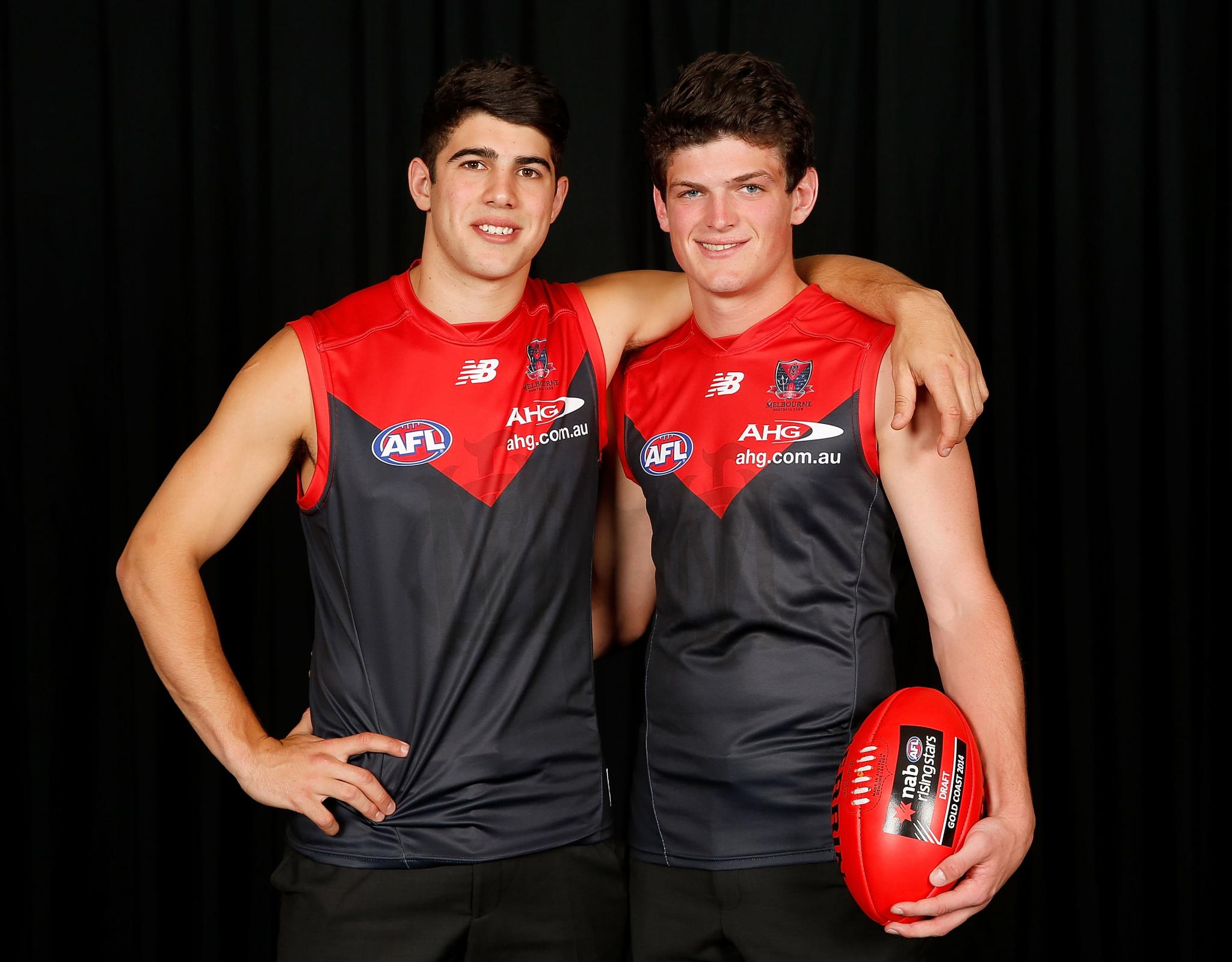
And Fremantle and Geelong could pluck three players inside the top 25, and both clubs have pleasant memories of the last time they did at least that.
The Dockers scored Stephen Hill (pick three), Hayden Ballantyne (21) and Nick Suban (24) in 2008, while the Cats recruited Jimmy Bartel (eight), James Kelly (17), Charlie Gardiner (23) and Steve Johnson (24) in 2001.
Those two draft hauls helped set up both teams for Grand Final appearances in the ensuing years, but it isn't always a quick fix or recipe for success.
Adelaide and Sydney are the only clubs not to have selected three times or more inside the top 25 at least once since the turn of the century.
Below are some of the more memorable recent examples when teams tried this draft strategy.
INDICATIVE DRAFT ORDER Your club's latest picks
St Kilda (2001)
2. Luke Ball, 5. Xavier Clarke, 13. Nick Dal Santo, 21. Matt Maguire
Verdict: Fresh from scooping up Nick Riewoldt and Justin Koschitzke with the top two picks a year earlier, the Saints went to work again. Dal Santo is the value pick based on how his career turned out, but Ball was part of the famed top three that year, along with Luke Hodge and Chris Judd. Ball made the last 81 of his 223 appearances for Collingwood, including playing in the 2010 flag against St Kilda, after a somewhat messy ending at the Saints. The onballer was an All Australian and won St Kilda's best and fairest in 2005. Dal Santo played 260 of his 322 matches for the Saints – the rest were at North Melbourne – was a key member of the 2009 and 2010 Grand Final sides and made the All Australian team three times. Injuries cruelled both Clarke and Maguire, who both finished at Brisbane, but they still played 106 and 170 times, respectively.
Nick Dal Santo and Matt Maguire celebrate a goal for the Saints in 2003. Picture: AFL Photos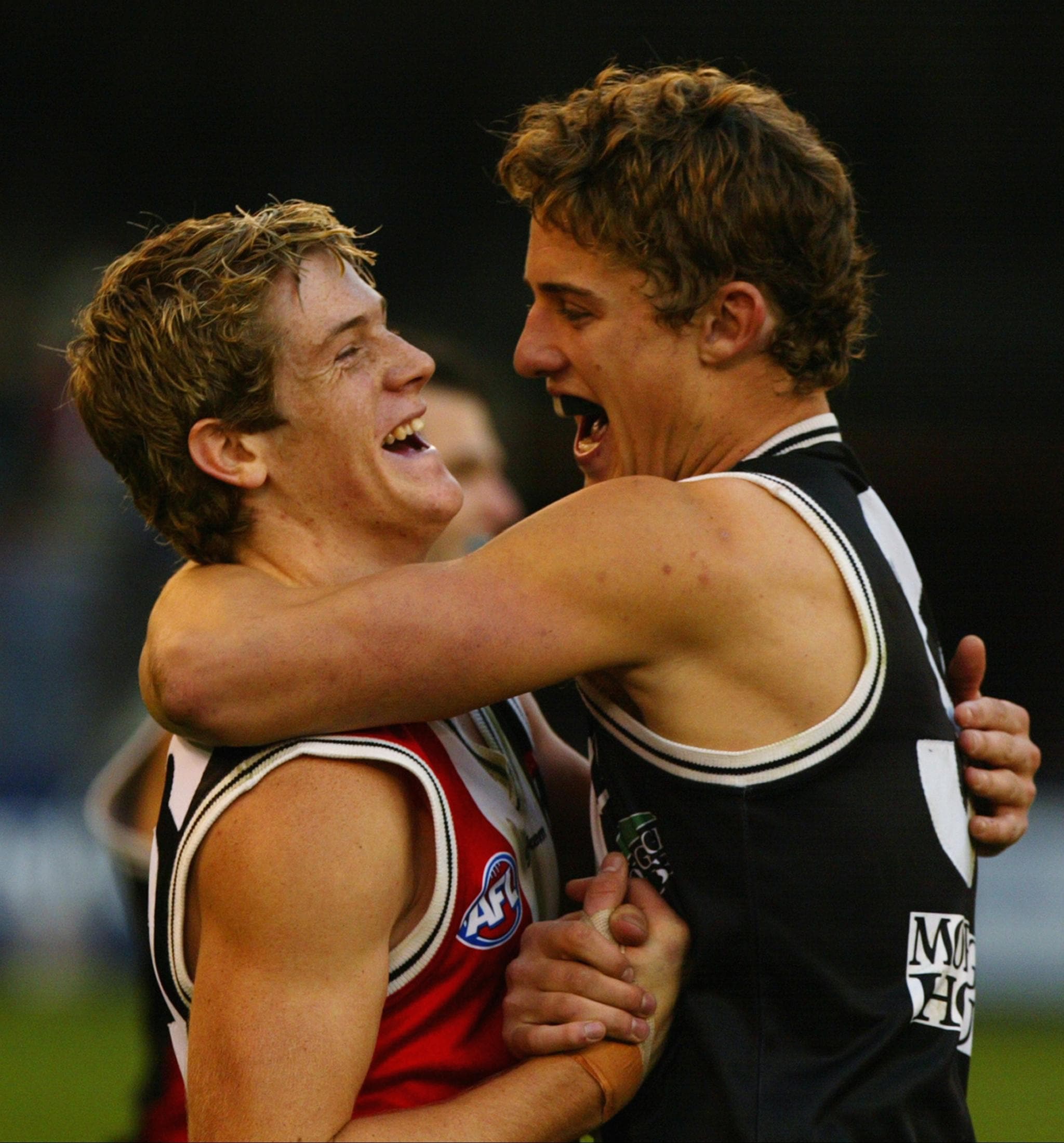
Richmond (2004)
1. Brett Deledio, 4. Richard Tambling, 12. Danny Meyer, 16. Adam Pattison, 20. Dean Polo
Verdict: Deledio fulfilled his end of the bargain, amassing 243 matches and being a dual Jack Dyer medallist and twice an All Australian. Elected to jump ship to the Giants to try to win a premiership but calf injuries besieged him as, much to his surprise, his old Tigers claimed flags in 2017 and 2019. Tambling is unfairly remembered as the player picked before Lance Franklin and he never lived up to the hype despite making 108 appearances for Richmond and another 16 for Adelaide. None of Meyer (17 games for the Tigers and nine for Port Adelaide), Pattison (61 at Richmond and five for St Kilda) and Polo (56 for the Tigers and 21 at the Saints) made a major impression. Polo produced 28 disposals and three goals on debut.
PHANTOM FORM GUIDE Cal Twomey's October update
Richmond coach Terry Wallace greets Richard Tambling and Brett Deledio after the draft. Picture: AFL Photos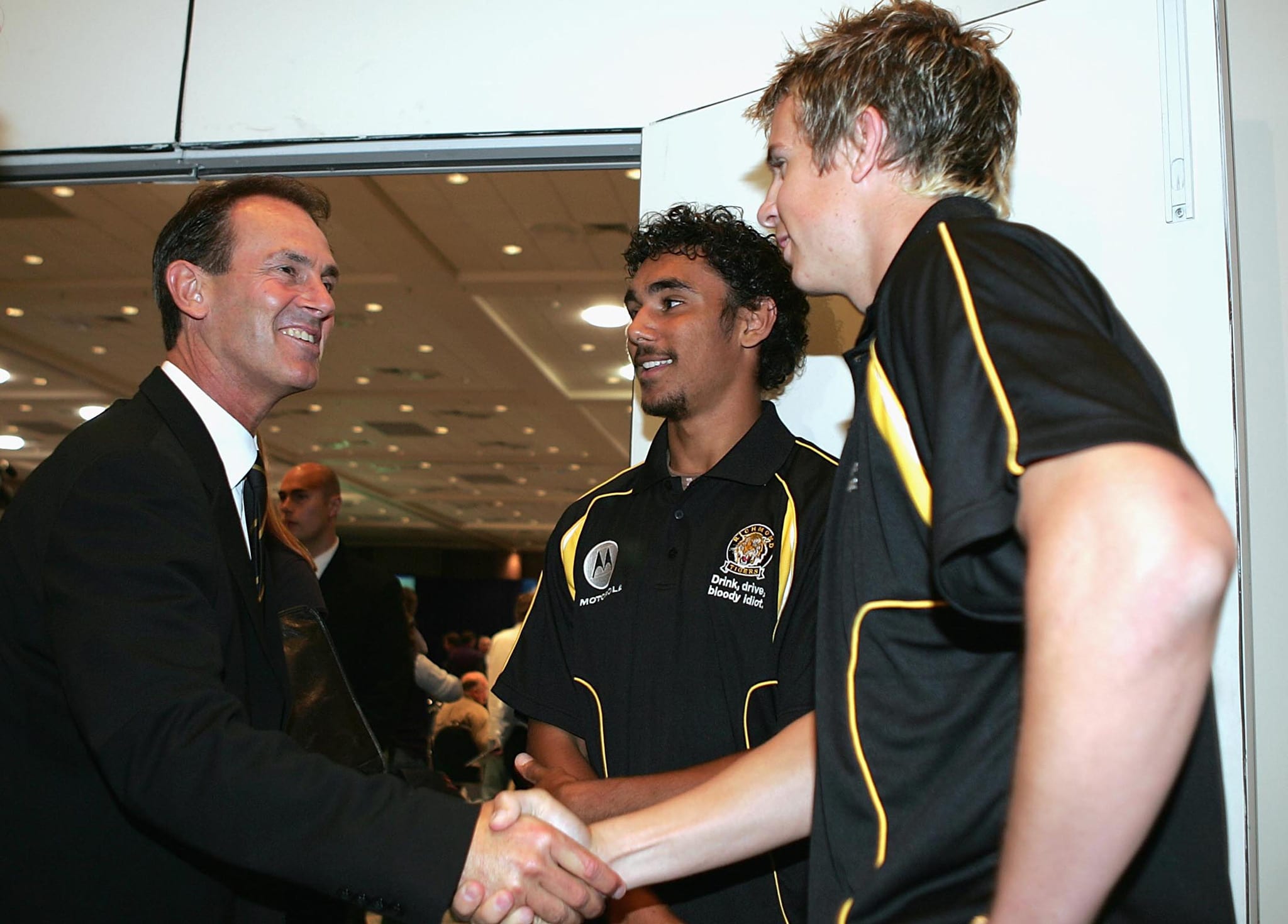
Hawthorn (2004)
2. Jarryd Roughead, 5. Lance Franklin, 7. Jordan Lewis, 21. Tom Murphy
Verdict: The story goes that Hawthorn chose Roughead before Franklin, because its recruiters knew the Tigers – who had selection No.3 – wouldn't take Franklin but liked 'Roughy'. Roughead played in four flags before retiring this year after 283 matches and 578 goals, won the 2013 Coleman Medal, was twice an All Australian and also skippered the brown and gold. Franklin departed for Sydney after playing in a second premiership in 2013. He's been a leviathan for both teams, playing 182 games and booting 580 majors for the Hawks and appearing 118 times and kicking 364 goals for Sydney. Chuck in eight All Australians and four Coleman Medals, too. Lewis was an enforcer and star in his own right across 319 contests (including 55 for Melbourne), winning four flags and Hawthorn's 2014 best and fairest. Murphy (95 games for the Hawks and 18 for the Suns) was a solid defender but never played in a Grand Final.
Jarryd Roughead and Lance Franklin with the 2013 premiership cup. Picture: AFL Photos
Carlton (2005)
1. Marc Murphy, 4. Josh Kennedy, 20. Paul Bower
Verdict: Murphy turned into a club captain, has played 268 games so far, is a dual club champion and was an All Australian in 2011. Kennedy (22 matches for the Blues and 221 for West Coast) is best known – at least from his Carlton days – for being part of the blockbuster Chris Judd trade in 2007. The Blues swapped Kennedy and draft picks No.3 (Chris Masten) and No.20 (Tony Notte) for Judd and selection No.46 (Dennis Armfield). Kennedy went on to become a premiership player, two-time Coleman medallist and triple All Australian. Meanwhile, key defender Bower played 70 games without setting the AFL world on fire. He looked to be developing nicely by 2009 – when he played 21 matches and finished seventh in the John Nicholls Medal – but injuries curtailed his career.
Carlton coach Denis Pagan, Marc Murphy and Oakleigh Chargers coach Rohan Welsh after the 2005 draft. Picture: AFL Photos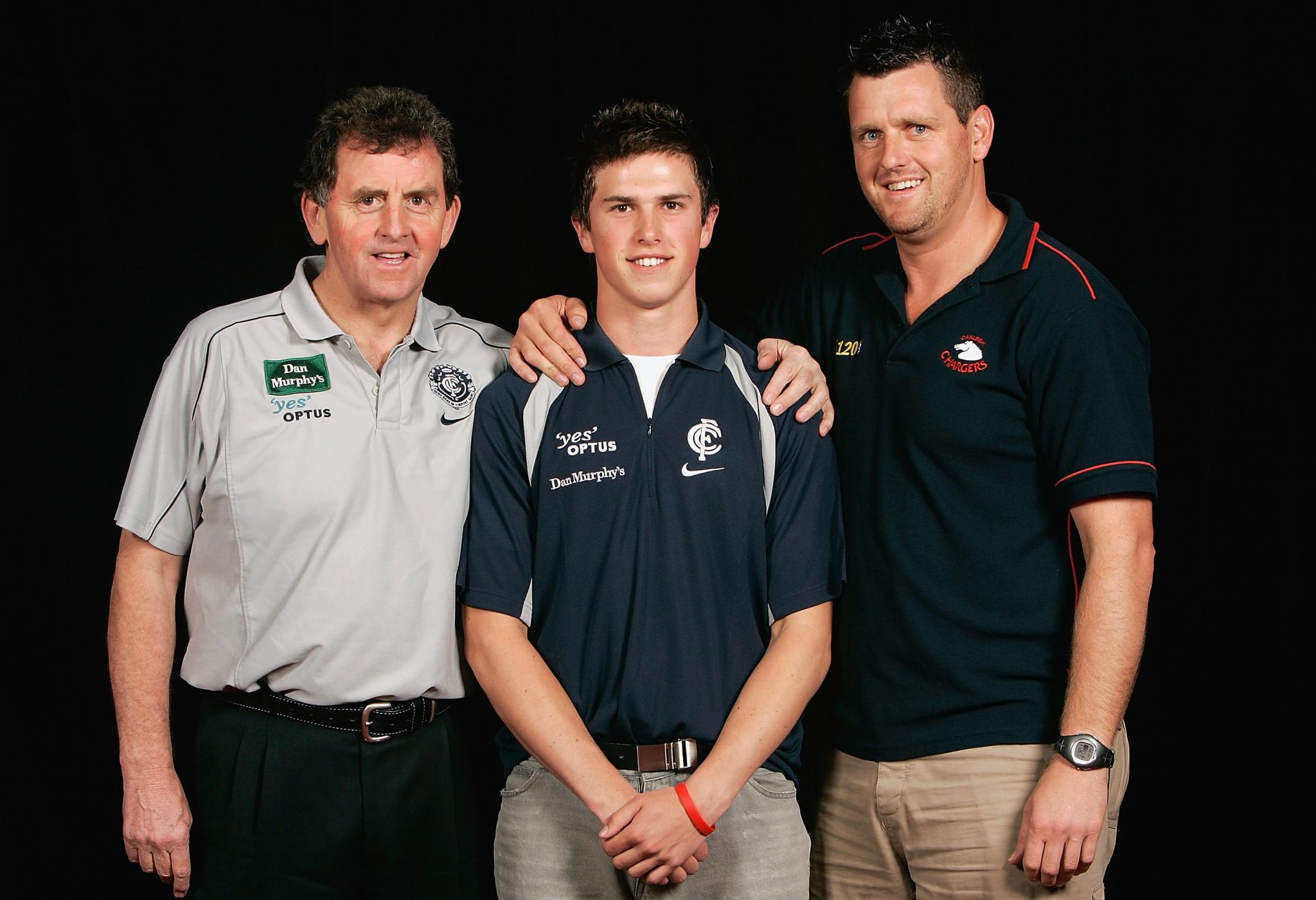
Collingwood (2005)
2. Dale Thomas, 5. Scott Pendlebury, 21. Danny Stanley, 23. Ryan Cook
Verdict: The Pies recruiters hit home runs with Gippsland Power teammates Thomas and Pendlebury, who were – or are in the latter's case – stars at the peak of their powers. They placed third and second, respectively, in Collingwood's best and fairest in 2010, when the club ended a 20-year premiership drought. Pendlebury won the Norm Smith Medal in the Grand Final replay. Thomas made a high-profile move in 2013 to Carlton, where he played 101 of his 258 games, but the 2011 All Australian was never the same footballer and retired this year. Pendlebury is an all-time great, has racked up 301 appearances (and counting), has captained the Magpies since 2014, been recognised six times as an All Australian and won the Copeland Trophy five times. Stanley played only five times for Collingwood before adding 83 more for Gold Coast, while Cook donned the black and white on 14 occasions.
Dale Thomas and Scott Pendlebury were a key part of Collingwood's 2010 premiership. Picture: AFL Photos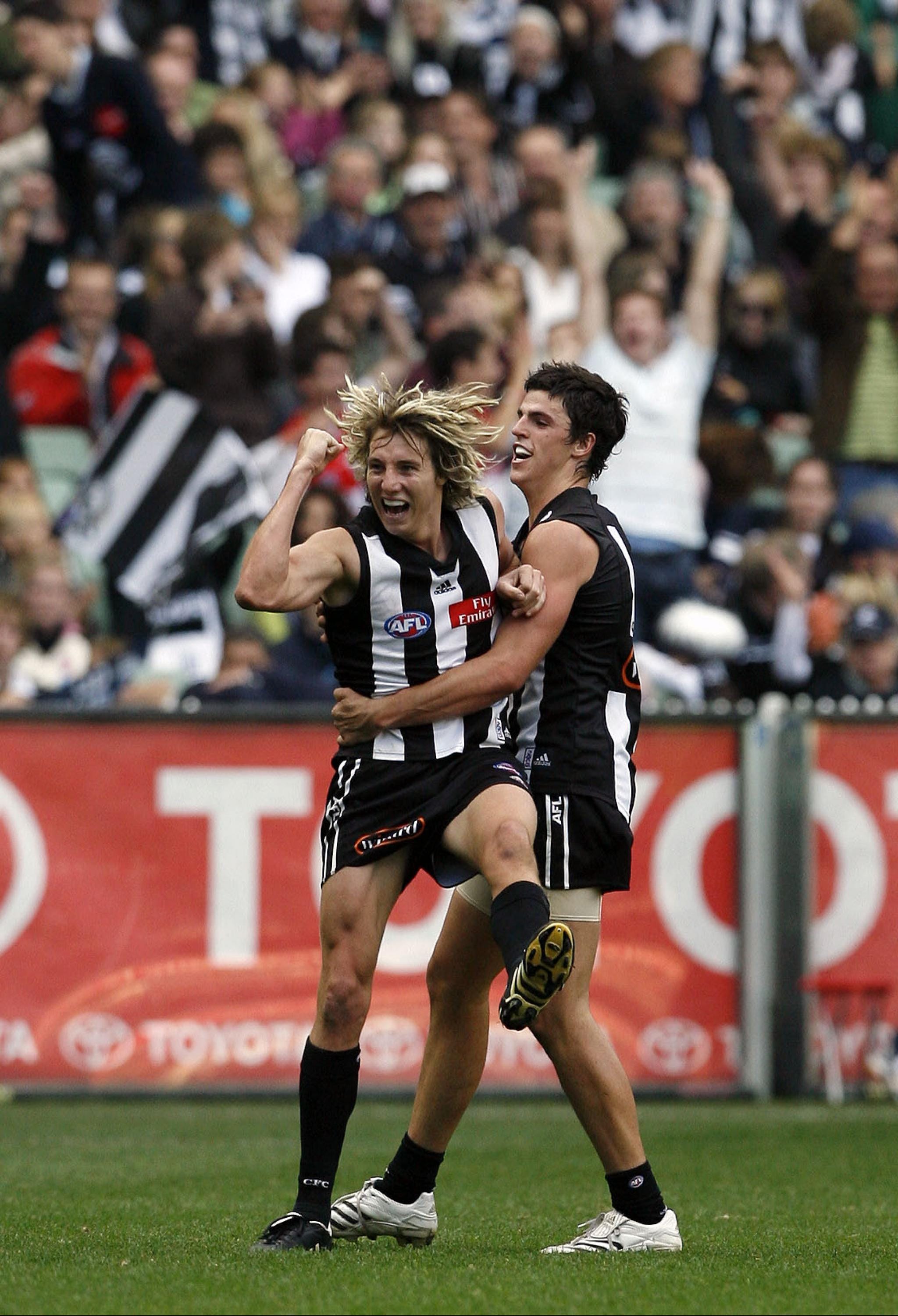
Find Road to the Draft on Apple Podcasts, Google Podcasts and Spotify.
West Coast (2008)
2. Nic Naitanui 18. Luke Shuey 20. Tom Swift
Verdict: Naitanui was chosen behind Jack Watts as an uber-athletic project ruckman who went on to make the All Australian team in 2012 and take Mark of the Year in 2015. Two knee reconstructions in recent seasons cost him from playing in the Eagles' premiership two seasons ago but he's become a cult hero across 166 matches. Shuey did play in the 2018 Grand Final and was the Norm Smith medallist that day, the highlight of a brilliant 201-game career that includes two club best and fairest awards. Swift was a junior prodigy but two serious knee injuries pre-draft saw him slide in the order and never realise his potential. Shocked the footy public when he retired after 34 appearances to study medicine at university.
Nic Naitanui and West Coast coach John Worsfold after the 2008 draft. Picture: AFL Photos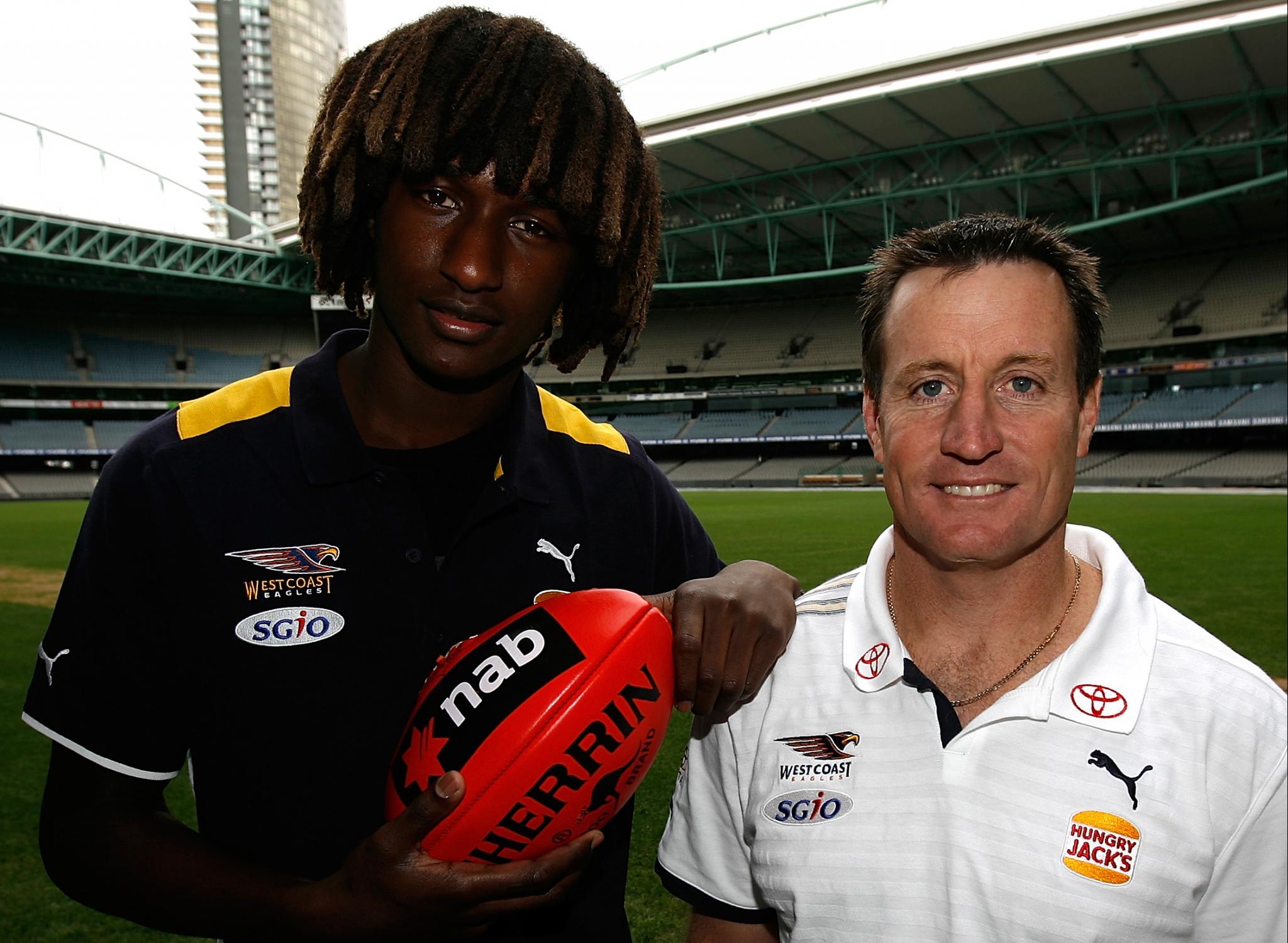
Melbourne (2009)
1. Tom Scully, 2. Jack Trengove, 11. Jordan Gysberts, 18. Luke Tapscott
Verdict: Looking back, future Richmond superstar Dustin Martin, taken at pick three, was the man to get, but Scully and Trengove were the consensus top two at the time. They were hailed as Melbourne's saviours and given Ron Barassi's No.31 and David Neitz's No.9, respectively. Scully left for GWS after only two seasons and 31 games as a Demon and is now a Hawk, while a serious foot injury derailed Trengove's career, which included 86 matches for Melbourne – the early ones quite promising – and three for the Power. They were there at a tumultuous time for the Demons, which didn't help their cause. Neither Gysberts (19 games) nor Tapscott (48) made up for the other two, either.
Tom Scully, Jordan Gysberts and Jack Trengove at the 2009 NAB AFL Rising Star awards. Picture: AFL Photos
Brisbane (2016)
3. Hugh McCluggage, 17. Jarrod Berry, 23. Alex Witherden, 24. Cedric Cox
Verdict: The Lions don't get much wrong these days and this draft was a big step in the right direction. McCluggage has developed into one of the AFL's best wingmen and made this year's Virgin Australia AFL All Australian squad of 40. If McCluggage (63 games) brings the outside run and class, then Berry (57) is the grunt. Witherden (53) is a dual NAB AFL Rising Star nominee and a wonderful kick in the back half who accumulates plenty of the Sherrin. Those three are locked away for a while as well: 2021 (McCluggage), 2022 (Witherden) and 2024 (Berry). They were all important in Brisbane playing finals football this past season. Cox is the anomaly at this stage, having played only 13 matches and facing a vital 2020 campaign.
Hugh McCluggage and Jarrod Berry after their AFL debuts in round three, 2017. 